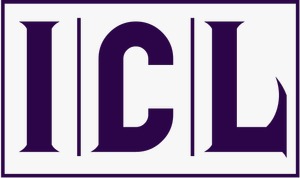Demographic factors in language learning
What matters in the language learning of children?
Keywords:
language learning, demographic factors, gender, parents, socio-economic statusAbstract
Language learning is one of the most challenging skills to teach in a formal learning environment and demographic information is very useful for understanding social and economic matrix of language learning. This research deals with language learning and the influence of different demographic factors like gender, parents’ income, parents’ education, family background, socioeconomic status and urbanity of geographic background on language learning of the children. A sample of 500 respondents participated in collection of data for the current study. The researchers developed a questionnaire consisting of 25 statements. Quantitative and descriptive statistics with SPSS software were employed to investigate the effects of demographic factors on the language learning process of children. The study concludes that the demographic factors play a significant role in language learning of the kids. There are differences in the language learning abilities, interest, resourcefulness and awareness of the learners on the base of the demographic factors. The study implicates that outcome of language learning can be estimated on the base of demographic information so the planning can be done accordingly.
References
Abbas, F., & Iqbal, Z. (2018). Language Attitude of the Pakistani Youth towards English, Urdu and Punjabi: A Comparative Study. Pakistan Journal of Distance and Online Learning, 4(1), 199-214.
Abbas, F., Aslam, S., & Yasmeen, R. (2011). Communicative language teaching: a modified version. Language in India, 11, 4.
Abbas, F., Nazir, S., & Rana, A. M. K. (2017). Language as cultural capital: Exploring the language use by Pakistani multilingual speakers in four domains. Hamdard Islamicus, 40(3&4), 1-16.
Ahmed, S., Abbas, F., Jalil, M. K., & Ahmed, M. (2019). Language anxiety as a detrimental factor in English language learning: A survey of religious Madaris. Al-Qalam, 24(2), 346-363.
Bernat, & Gvozdenko (2005). Beliefs about language learning, current knowledge, pedagogical implications and new research directions. Tesljt-EJ, 9 retrieved on December 5, 2007.
Bernat. & Lloyd (2007). Exploring the demographic effects on learners’ beliefs about language learning. Australian Journal of Education and Developmental Psychology. June 25, 2007. 79-91.
Bickman, L. (1972). Social influence and diffusion of responsibility in an emergency. Journal of Experimental Social Psychology, March 12, 1977. 438-445.
Block, (2002). The relationship between gender, comprehension, processing strategies, and cognitive and affective response in second-language listening. Modern Language Journal 76: 160 – 78.
Butler, (1990). Sexist language and teaching English as a foreign language. In C. Pearson. Casanave, & A. Yamashiro (eds.). Gender Issues in Language Education. Keio University Shonan Fujisawa Campus.
Cortazzi & Jin, L (1996). Cultures of learning and Language classrooms in China. Cambridge University Press, Cambridge.
Dimitrov, D. (1999). Gender differences in Science achievement: Differential effect ability, response format, and strands of learning outcomes. School Science and Mathematics, Vol. 99, Issue 8, p. 445.
Ehrlich, S. (1997). Gender as social practice: implications for second language acquisition. Studies in Second Language Acquisition 19/4: 421 – 46.
Gardner, R.C., Lambert, W.C. & Smythe (1975). Attitudes and Motivation in Second Language Learning. Rowley, MA: Newbury House.
Graddol, (2006). Language and gender as applied linguistics. Bulletin Suisse de Linguistique Appliquee 62: 75 – 88.
Graddol, D. and Swann, J. (1995). Language and gender as applied linguistics. Bulletin Suisse de Linguistique Appliquee 62: 75 – 88.
Horwits, (1988). Gender and pedagogic dictionaries. In J. Sunderland (ed.) Exploring Gender:
Horwitz, (1987). Language and Gender: A state-of-the-art survey article. Language Teaching, 24 (4): 207-20.
Larsen Freeman, D., & Long. M.H. (1991). An introduction to Demographic factors and its impact on language acquisition research. London & New York: Longman.
MacIntyre, P.D. (1994). Toward a social psychological model of strategy use. Foreign Language Annals, 27, 185–195.
O’Malley, J.M., & Chamot, A.U. (1990). Learning strategies in language acquisition. Cambridge: Cambridge University Press.
Opper, S., Teichler, U., & Carlson, J. (1990). Impacts of demographic factors on studying languages of students’ surroundings and environment. London. Jessica Kinglsey Publishers.
Oxford, R. & Shearin (1994). La différence continue....: gender differences in second/foreign language learning styles and strategies. In J. Sunderland (ed) Exploring Gender: Questions and Implications for English Language Education. Hemel Hempstead: Prentice Hall.
Oxford, R.L. (1989). Use of language learning strategies: A synthesis of studies with implications for strategy training. System. London. Jessica Kinglsey Publishers. 17(2),235–247.
Oxford, R.L. (1990). Language learning strategies: What every teacher should know. NewYork: Newbury House.
Oxford, R.L. (1996). Language learning strategies around the world: Cross-cultural Perspectives. Manoa: University of Hawai Press.
Patterson & Goddard (2000). The impact of learners’ demographical variables on language acquisitions test performance. TESOL Quarterly 19/2: 283 - 301. Peacock, (1999). Bilingualism, gender and ideology. International Journal of Bilingualism.
Purpura, J. (1997). An analysis of the relationship of test-takers’ cognitive and metacognitive strategy use and second language test performance. London. Jessica Kinglsey. Publishers 47(2), 289–325.
Questions and Implications for English Language Education. Hemel Hempstead: Prentice Hall.
Schodt, Paul. (2002). “The relationship between demographic factors and language: identification and Organizational culture: students’ perceptions about culture”, Communication studies, vol.53 no. 2, p. 189.
Sunderland, J. 2000a. New understandings of gender and language classroom research: texts, teacher talk and student talk. Language Teaching Research 4.2: 149 – 173. Sunderland, J. 2000b. Gender and classroom research: what’s special about the language classroom? In E. Cochran and M. Yepez (eds) Gender, Language Learning and Classroom Pedagogy. New Jersey: TESOL/BE and BASTOS Educational Books.
Trudgill (1974). Language and Gender: An Introduction. Cambridge: Polity Press.
Downloads
Published
How to Cite
Issue
Section
License

This work is licensed under a Creative Commons Attribution-NonCommercial-NoDerivatives 4.0 International License.

